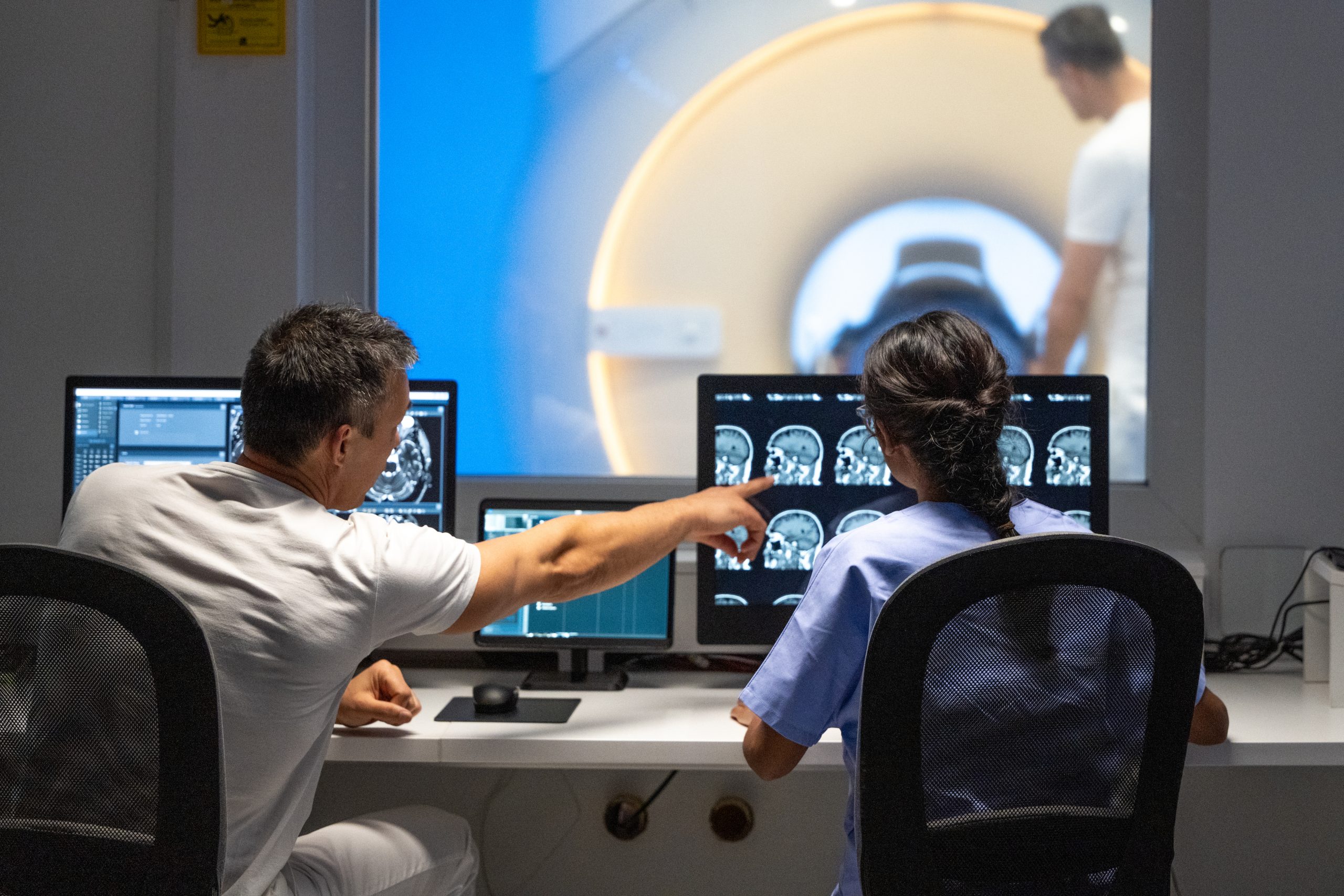|
Getting your Trinity Audio player ready...
|
Brain surgeons need steady hands as well as cool heads. Now they’re getting a helping hand from researchers in Europe to fight a fatal type of brain cancer called glioblastoma.
A Danish biotechnology company named FluoGuide led a research project that received EU funding to pinpoint glioblastoma better so surgeons can more easily remove it. FluoGuide developed a fluorescent chemical dye that’s injected into patients before surgery.
Real-time help
The compound locks onto aggressive cancer cells through an enzyme that the rogue cancer cells use against the body. Once a physician shines an infrared light onto brain tissue during an operation, the cancer cells with this enzyme fluoresce.
‘We basically light up the cancer and help the surgeon remove it in real time,’ said Morten Albrechtsen, FluoGuide’s chief executive officer.
No cures exist for glioblastoma, which is the most common type of malignant brain tumour. This type of cancer is on the rise in many countries and patient survival is on average around 15 months.
In Europe, approximately 15 000 people die annually from glioblastoma.
The EU-funded project – called INSTAGLOW – that FluoGuide led ran for two and a half years until the end of 2022. The research showed the company’s breakthrough to be safe in patients.
FluoGuide uses a system based on work done by academics at Copenhagen University Hospital – Rigshospitalet – and the University of Copenhagen decades ago.
Shining chemical
A crucial part of the technology relies on an enzyme called uPAR, which stands for urokinase-type plasminogen activator receptor. Tumours wield uPAR enzymes like a molecular machete, chopping through healthy cells to make room for a growing cancer.
“
We basically light up the cancer and help the surgeon remove it in real time.
FluoGuide developed a protein attached to a fluorophore – a chemical that shines when hit by light. The protein-fluorophore tandem gets injected into the patient, circulates in the body and attaches itself to the uPAR cancer cells.
During surgery, an infrared light is directed at brain tissue and reveals where the fluorophore and, by extension, the uPAR is in the brain.
The enzyme is most abundant at the boundary of a tumour and healthy tissue, giving surgeons a visual guide to where the cancer ends and the healthy tissue begins. This allows them to skirt away from noncancerous parts of the brain.
The product has been tested in 36 patients with aggressive brain cancer in Denmark and Sweden.
The next steps are for it to be tested in more patients in Europe as well as ones in the US as they undergo surgery for glioblastoma. Success here would allow the product to be approved for widespread use.
Better MRI
Another strategy for battling glioblastoma is to introduce special viruses that seek and destroy the tumour.
While hospitals are moving closer to using these so-called oncolytic viruses, they have yet to be approved as a treatment. A major challenge is to gauge the effects of this therapy within the brain.
“
The idea was to come up with a map that shows you dying cells in the brain.
Ordinary MRI relies on differences in the magnetic properties of water in tissues and can be used to “see” a brain tumour. But MRI has shortcomings when it comes to revealing early changes in a tumour during a treatment.
Dr Or Perlman, a biomedical engineer at the University of Tel Aviv in Israel, has worked with researchers in Germany and the US to tweak MRI to suit this purpose better as part of a second EU-funded project.
Called OncoViroMRI, the initiative wrapped up in June 2023 after 44 months.
Instead of relying on water content, Perlman’s approach relies on other molecules to generate a superior image of a tumour in the brain.
The ultimate plan is to inject patients with cancer-killing viruses and then use this MRI approach to monitor the effect of the viruses on the cancer. It is thought that immune cells would also be prompted by the viruses to target and kill infected cancer cells.
‘The idea was to come up with a map that shows you dying cells in the brain, so revealing which regions of the tumour respond to the virus,’ said Perlman.
The work by researchers under OncoViroMRI was mostly done in laboratory mice. Medical doctors took part in the project in an effort to help draw lessons for the treatment of patients.
Need for speed
The challenge now for scientists like Perlman is to make the imaging fast enough. This requires artificial intelligence to decipher the data from MRI and turn it into a readable map that doctors can use to track patient progress.
One upside is that this didn’t need any changes in the MRI equipment, so in future it could be plugged into a normal hospital procedure.
‘The next step is to study a small number of patients with tumours to see if we can track their cancer,’ said Perlman.
The strategies developed under both OncoViroMRI and INSTAGLOW should be applicable to other types of cancer as well.
Back in Copenhagen, FluoGuide has shown its new product can work in lung cancer patients. Also on its radar is breast cancer in women and head and neck cancer.
The company’s product was tested on 16 patients with lung cancer and clinical testing is taking place of the dye in patients with head and neck cancer.
‘So far it has worked extremely well for brain cancer,’ said Albrechtsen.
Research in this article was funded by the EU via the Marie Skłodowska-Curie Actions (MSCA). If you liked this article, please consider sharing it on social media.
Beating cancer
Europe accounts for a quarter of the world’s cancer cases while representing 10% of the global population. In the EU in 2020, 2.7 million people were diagnosed with cancer and another 1.3 million people died from the disease.
The EU Mission on Cancer aims to improve the lives of more than 3 million people by 2030 through a range of actions including treatment. As a major component of the EU’s investment in cancer research and innovation, the Mission will deepen understanding of the disease, focus on prevention and earlier diagnosis and improve patients’ quality of life during and after their treatment.
Together with the Mission, Europe’s Beating Cancer Plan is tackling the entire disease pathway from prevention to quality of life. It will enable expertise and resources to be shared across the EU, helping researchers exchange findings and medical staff and hospitals to tap into common sources of data.



